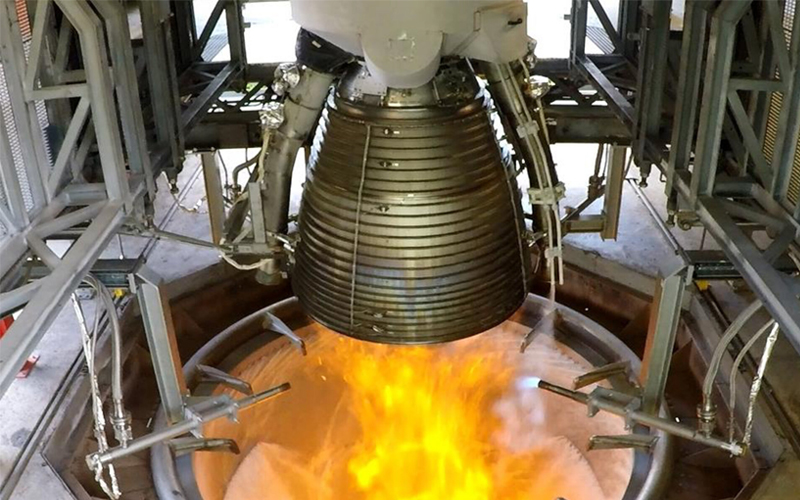
ESA announced 19 October that it had adapted the Ariane 6 testing schedule to enable teams to continue to tick off key milestones while work on a Thrust Vector Control (TVC) anomaly continues.
The first hot fire test of an Ariane 6 core stage was completed on 5 September. Following that test, as teams worked towards a full-duration hot fire test, an anomaly with the hydraulic group of the rocket’s TVC system was discovered. The discovery of the anomaly meant that the 470-second test had to be postponed.
According to ESA, teams working on the problem have found that the anomaly is characterized by an abnormal internal pressure of the hydraulic group. However, time will still be needed to disassemble the equipment, determine the root cause, and implement corrective measures.
ESA identified the Belgian company SABCA as the supplier of the TVC hydraulic system in question. According to an agency update, SABCA has already prepared a replacement hydraulic group “without waiting for the results of the technical investigation.”
As a result of needing more time to assess and resolve the problem, ESA has “inverted” the testing schedule. Instead of the next major milestone to be conducted on the launchpad in French Guiana being a long-duration hot fire test, teams will proceed with a full 36-hour launch rehearsal that will be concluded with a short ignition of the main stage. According to the agency, this ignition “is compatible with the parallel resolution of the anomaly.”
The long-duration hot fire test is now planned for 23 November. However, that date is surely provisional, considering the fact that the root cause of the anomaly is not yet known. The final major Ariane 6 test of 2023 will be an upper stage test occurring in Lampoldshausen, Germany, in December.
ESA currently projects a maiden Ariane 6 flight lifting off sometime in 2024. As the agency has stated before, a more specific launch period estimate for the rocket’s debut flight will be announced following the completion of the full-duration hot fire test.




